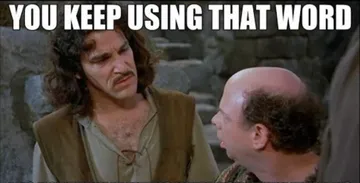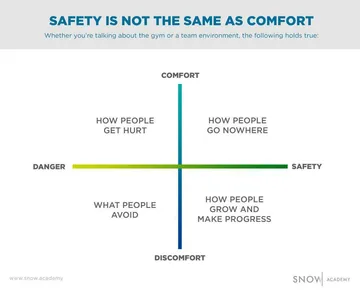Encouraging Inclusion Through Healthy Team Collaboration

Psychological safety is the foundation of team collaboration at Viget.
When people ask me why I like working at Viget, I always tell them it’s because of the people. We work on a wide variety of projects for compelling and innovative client organizations, but from my perspective as a project manager, it’s the humans on the team who truly shape the project experience. The mindset with which we approach challenges, share our expertise, and help each other along the way not only makes a big difference in the outcome of our projects, but also affects how our company culture grows and evolves.
Last quarter, we shared our new Team Collaboration Guidelines with all Viget employees. These guidelines are an important part of the progress we’re making toward our Diversity, Equity, and Inclusion (DEI) goals here at Viget. The DEI Advisory Committee (we call it DEIAC – “DAY-ack”) took on the initiative to research psychological safety in the workplace, reflect on our own positive and negative experiences with team collaboration, and document the best practices we’d like everyone at Viget to follow in pursuit of an inclusive company culture.
Before I get into the details of those guidelines, let me first take a step back to provide more context about DEIAC and the broader goals we’re trying to achieve.
DEI at Viget
In early 2021, we began working with Collective, a DEI consultancy that conducted a culture assessment to understand the state of DEI at Viget. They surveyed and interviewed our team about our experiences working here and our perceptions of our work culture. The results of that assessment identified some key challenges to achieving the healthy culture we desire. To address the areas needing improvement, Collective helped us draft a DEI strategic plan, with specific goals for our ongoing DEI work:
Foster employee growth
Cultivate a culture of inclusion and belonging
Build psychological safety and accountability at Viget
Our employee-led DEIAC, whose volunteer membership rotates quarterly, takes on different initiatives each quarter to make progress toward these goals. The effort to create the Team Collaboration Guidelines, for example, aimed specifically for the third goal. To reach it, we need to support everyone at Viget with the tools and resources they need to voice their opinions and navigate conflict, so that we can build and maintain a culture of healthy conflict resolution, psychological safety, and accountability.
Psychological Safety Defined

But what, exactly, is psychological safety? When we started this initiative, I honestly didn’t know, and it’s a little different than what I would have guessed when I first heard the term. We defined it in our DEI strategic plan as
Feeling comfortable speaking up, admitting mistakes, and being part of a culture of learning without fear.
Those without psychological safety may filter themselves, avoid speaking up, and are limited in how they are able to contribute their perspective and background.
The concept of psychological safety was born out of research in the 1990’s and early 2000’s by a Harvard Business School professor, looking at hospitals with strong patient outcomes. Why were some nurses able to tell a doctor they were about to give the wrong dose of medication? Or point out that they had misread a patient's chart? Questioning a physician's judgment, often in an urgent setting, required something more than just confidence from the nurse. It required an atmosphere of psychological safety, where everyone was more committed to the shared objective than to their own pride or ego.
(If you’re a manager or team leader, I highly recommend reading this paper by Amy Edmonson. Even though the examples in it aren’t directly related to our work at Viget, they really solidified the concept for me.)
Psychological Safety on Project Teams
So, what does psychological safety mean in the context of our work at an agency like Viget, or on technical project teams in other organizations? That’s the first question our DEIAC group asked as we started to create our Team Collaboration Guidelines.
Here are some examples of what might occur on a team lacking in psychological safety:
New hires are afraid to admit they’ve never done a project like this one before.
Junior folks don’t feel like they can ask for help.
Team members don’t feel like they can suggest new ideas or techniques.
Senior folks are unavailable for mentorship and delegate “helping” tasks to other team members.
If psychological safety is learning without fear, what might someone be afraid of in these scenarios?
Embarrassment, especially being seen as ignorant or incompetent.
Rejection. This could be social rejection or teasing, or simply being labeled “negative” or “disruptive.”
Punishment. People may fear negative consequences in their careers if they ask “too many” questions and come across as incompetent, or if they dare to challenge the authority of someone more senior than them.
On the flip side, a team whose members feel psychologically safe looks more like this:
Junior folks don’t hesitate to ask for guidance, which others are available to provide.
Senior folks are comfortable admitting to mistakes or changing their minds.
The whole team might decide to try out a new routine to encourage collaboration.
Critique is sought out, appreciated, and spread evenly across all roles and titles.
It might sound cheesy, but psychological safety is a type of group trust, which is a lot harder to achieve than trust between individuals. If we can cultivate it, though, it has the potential to make us efficient and high-achieving. In practice, it just means
We approach each other with good intentions.
We share common goals. We’re on the same team.
We don’t punish each other with rejection, humiliation, or social consequences for failures. If we can fail fast and have it be part of the process, we’ll also succeed faster.
Healthy Discomfort
While understanding that the concept of psychological safety is fundamentally “learning without fear,” it’s worth discussing another part of the definition – “feeling comfortable.”
Feeling comfortable does not mean avoiding conflict or discouraging disagreement.
You can experience both safety and discomfort at the same time. And often, when we do, that’s when we grow.
A good example of this concept is working with a personal trainer at your gym. The workout itself is not particularly pleasant, and the soreness is terrible. But as you perform those exercises, the trainer is watching out for you. They’re not asking you to do anything unsafe. They share the same goal that you have. And by going through that discomfort, the result is a stronger version of yourself.

Shane Snow illustrated this well in an article published in Forbes.
This place (the bottom right quadrant) of temporary, healthy discomfort is where we hope to operate on a lot of our projects. It’s uncomfortable facing challenges and conflicts, from within our team or from clients. It’s uncomfortable not knowing all the answers or disagreeing on the best path forward. But when that discomfort happens on teams without fear or danger, coupled with a commitment to safety, it’s rewarding on an interpersonal level and for the results of the project itself.
Allowing ourselves to experience discomfort, and supporting our team members when they feel the same, is how we innovate, grow, and make progress.
Growing Together
Viget’s Team Collaboration Guidelines represent the culmination of a lot of volunteer effort – research, reading, and plenty of sometimes-awkward discussion to wrap our heads around the concept of psychological safety – to make progress toward some daunting and somewhat murky goals. The group who compiled this document are not experts in psychology or DEI, and drafting it was not easy, but we stuck with it because we believe in these values and because we take seriously our responsibility to create and participate in a truly inclusive work culture.
Each individual at Viget is empowered to join in these efforts and consider their own behavior and accountability on their teams. The responsibilities implied by these guidelines are different for each person because of factors such as personality, job function, tenure, and seniority, and we’ve encouraged the whole staff to think about how they can apply them in their work.
Are you willing to get out of your comfort zone and try someone else’s approach to a problem?
Do you need to listen more than you talk in meetings?
Are you missing opportunities for growth because you get hung up on criticism?
We’re also incorporating reminders of best practices into our standard processes. During employee onboarding, new hires are asked to familiarize themselves with our approach to team collaboration. When we kick off new projects internally, project managers provide time and space for the whole team to discuss their communication preferences and aspects of collaboration that might affect that particular project. We reflect on those in project retrospectives. Team surveys conducted ahead of retro meetings ask questions focused on team dynamics, with the goal of understanding our progress in this area, both individually and as a company.
As our project teams have more opportunities to practice these concepts and reflect on our experiences, we hope that our shared efforts will lead us closer to the culture of inclusion and belonging that we’re aiming for. We look forward to sharing more of our experiences and progress as we keep trying to get it right.
